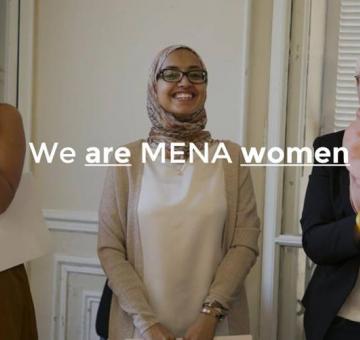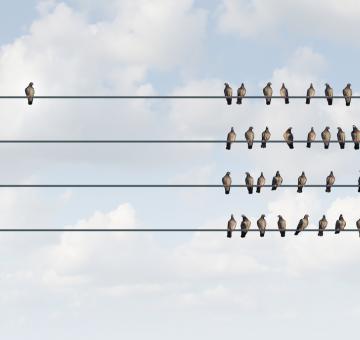The Importance Of “Cultural Alignment” for Global Creativity

Photo credits: Pixabay
This article was first published in Innovation Excellence
How does culture impact creativity? What is the difference between “local” and “foreign” creative tasks? And what does that all have to do with crowdsourcing? A recently published article sheds light on the relationship between culture, creativity and the importance of “cultural alignment” for cross-cultural creative tasks.
The paper looks at the effect of culture (the extent to which countries have strong cultural norms and enforce them strictly) on peoples’ likelihood to participate in, and succeed at, global creative tasks. It advances a new theoretical model, the “Cultural Alignment Model of Global Creativity,” to understand how culture impacts creativity in a global context.
Written in collaboration with Roy Chua (Lee Kong Chian School of Business, Singapore Management University) and Jean-François Lemoine (Université Paris 1 Panthéon Sorbonne and ESSCA School of Management), our paper explores the mechanisms of cross-border creativity in crowdsourcing.
Here is the paper’s abstract which is, for readers who are not familiar with academic papers, is the brief summary used to help the reader quickly ascertain the paper’s purpose:
Abstract – “There is increasing scholarly interest in how culture impacts creativity. This paper advances a new theoretical model to understand how culture impacts creativity in a global context. We theorize that creativity engagement and success depends on the cultural tightness (the extent to which a country is characterized by strong social norms and low tolerance for deviant behaviors) of both the innovator’s country and the audience’s country as well as the cultural distance between these two countries. Using field data from a global online creative crowdsourcing platform, we found that individuals from tight cultures are less likely than counterparts from loose cultures to engage in and succeed at foreign creative tasks; this effect is intensified as the cultural distance between the innovator and audience country increases. Additionally, tight cultures are less receptive toward foreign creative ideas. However, contrary to what current theorizing would predict, we found that in the cases of individuals doing creative work in their own or culturally close countries, cultural tightness increases the likelihood of engagement and success. Taken together, our findings expand current theorizing about how cultural tightness impacts creativity and demonstrate on how cultural norms impact creativity on a global scale. Theoretical and practical implications are discussed.“
Here are two excerpts from the paper, which I have taken from the last version of the paper (before acceptance). The first is a wrap-up of our results; the second is a paragraph about the theoretical contribution of our work:
Excerpt 1 – “Using data from a global crowdsourcing platform, we found that an individual from a tight culture is less likely than a counterpart from a loose culture to engage in and succeed at foreign creative tasks that are culturally distant. The greater the cultural distance, the stronger the negative impact of cultural tightness. Further, our results suggest that the tighter the culture of the audience country, the lower the likelihood of creativity success in that country for foreign entrants. In the case of local creative tasks, contrary to what current theorizing would predict, cultural tightness increases the likelihood of engagement and success. Taken together, these findings provide an unprecedented demonstration on how cultural norms impact creativity on a global scale.“
Excerpt 2 – “The finding that the greater the cultural distance, the less likely one is to engage in and succeed at foreign creative tasks underscores the challenges in global creative work. Importantly, inherent in this finding is the theoretical underpinning that creativity engagement and success depends in part on whether there is some degree of cultural alignment between the innovator’s country and the audience country. Indeed, our unexpected finding that individuals from tighter cultures are more likely to engage and succeed in foreign creative tasks from culturally similar countries provides further support for this cultural proximity argument.”
Here are 10 quotes to better understand our article:
1 – In the introduction, when we introduce the topic and why it’s interesting to look at creativity on a global scale:
With the globalization of business, creative tasks themselves have begun to transcend national boundaries.
2 – The theoretical gap that we identified in the literature is that very little has been written about cross-border creative activity:
We still lack a theoretical exposition and empirical demonstration of how a country’s culture influences its people’s motivation and ability to innovate both within and outside their own country.
3 – Generally, the idea that creativity is socially constructed has already been proposed in the literature:
The success of creativity depends in part on the extent to which an audience is receptive to the proposed new ideas [because] whether an idea is considered creative is socially constructed.
4 – Jumping to the results, here’s a quote about one of our key findings about cultural tightness and cross-cultural creativity:
We found that an individual from a tight culture is less likely than a counterpart from a loose culture to engage in and succeed at foreign creative tasks that are culturally distant.
5 – Why so? We posit that people from tight cultures may be less motivated to engage in culturally unfamiliar creative tasks:
From a motivational perspective, it could be that individuals from tight cultures find it challenging to work with unfamiliar foreign ideas.
6 – We also look at the culture of the creative task’s audience country, which is novel in the literature, and find that:
The tighter the culture of the audience country, the lower the likelihood of creativity success in that country for foreign entrants.
7 – While cultural tightness hinders inter-cultural creative activity & success, the effect on intra-cultural creative tasks is reversed, which is one of our counter-intuitive findings:
For local creative tasks, contrary to what current theorizing would predict, cultural tightness increases the likelihood of engagement and success.
8 – In sum, our paper (which advances a “Cultural Alignment Model of Global Creativity”) explains that there needs to be a cultural fit between cultures in cross-border creative tasks:
Creativity [depends] on whether there is some degree of cultural alignment between the innovator’s country and the audience country.
9 – When it comes to open innovation and crowdsourcing research, looking at the crowd as a culturally heterogeneous (and proving that it impacts participation and success) is novel too:
To our knowledge, our work is the first to investigate how the cultural heterogeneity of crowds (participants) and companies (clients) affects participation and performance in global creative problem solving
10 – To conclude we say that this research might be a starting point for much more research about cultural tightness, cross-cultural creativity, and culturally diverse crowds:
We believe that this research provides a good starting point for scholars to further study the impact of culture on creativity
For the Complete Paper click here.






































































EgyptInnovate site is not responsible for the content of the comments